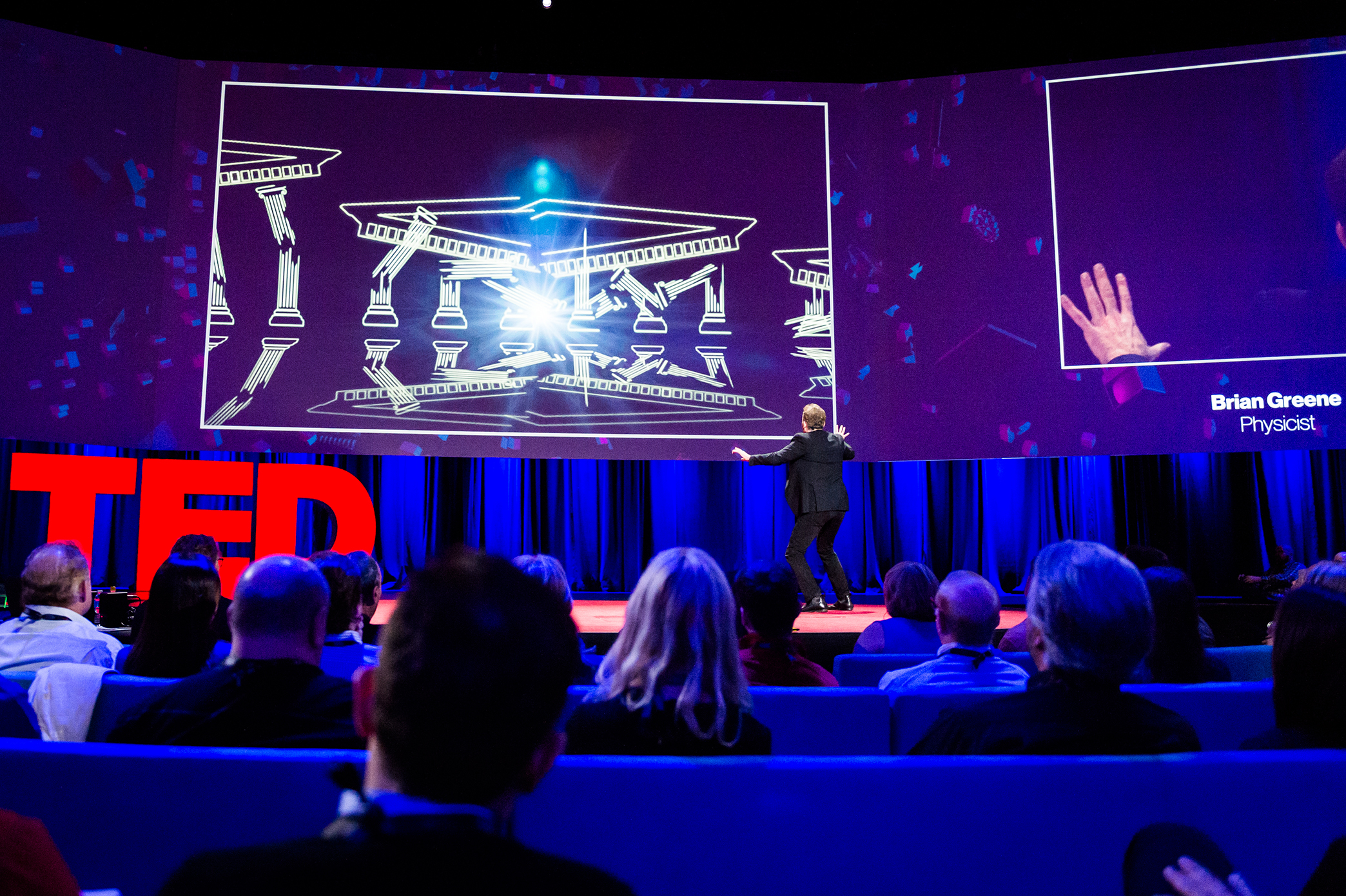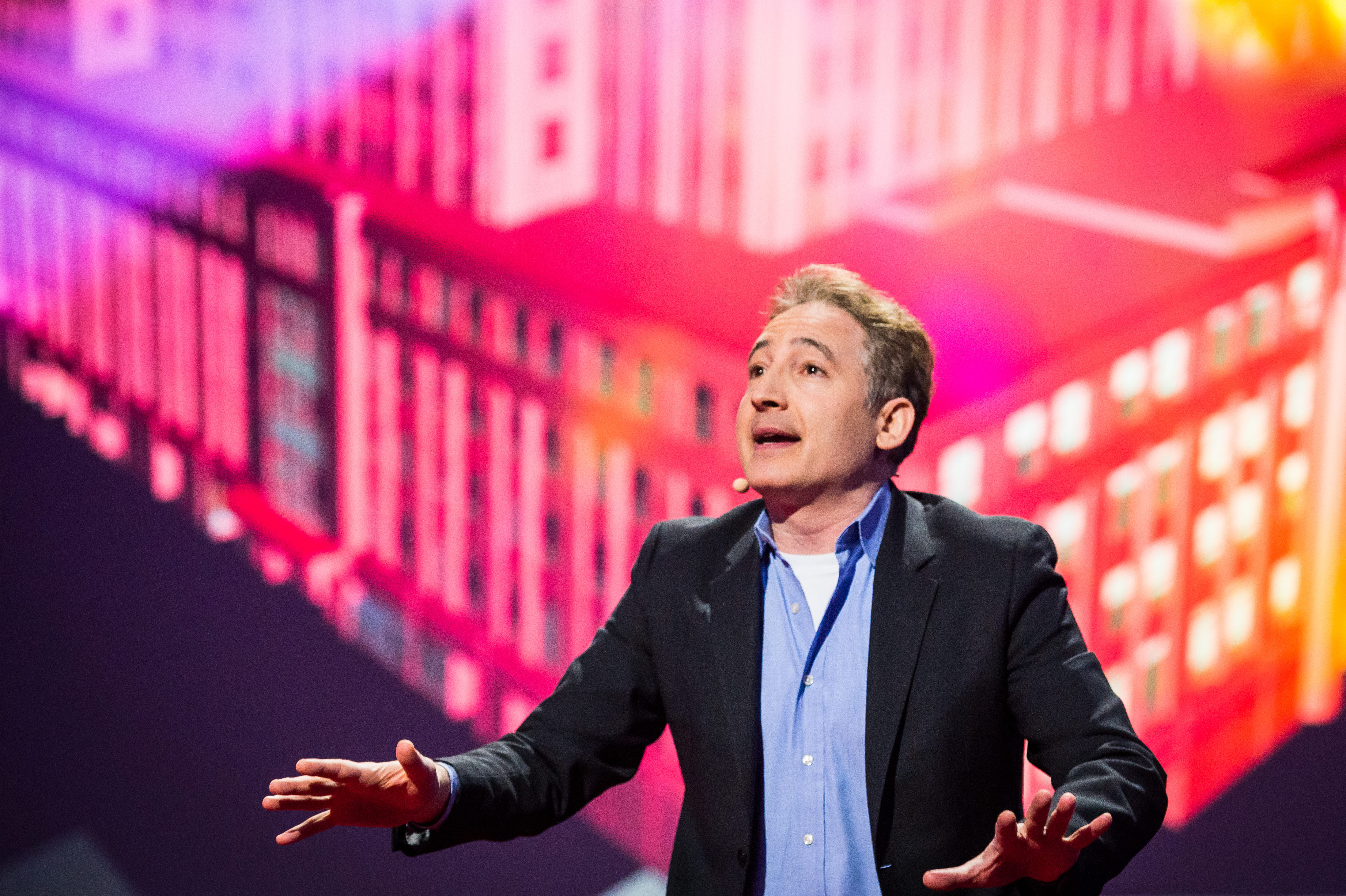Physicist Brian Green promises he will tell the audience at TED 2014 the whole history of the universe in four minutes. “Forgive me,” he says, “if I leave out a detail here or there.”
He does it with two metaphors. One from the beginning till now, and another from now till the end.
The universe today is 13.8 billion years old, and it can be very hard to get our minds around that number. So Greene uses a metaphor pioneered by Carl Sagan. Imagine that we’re part of a single calendar year. All of cosmic history compressed into a single calendar year. On this calendar:
- May 12, the Milky Way is formed.
- Sept 2nd, the Earth is formed.
- 11:40pm New Year’s Eve, Humans evolve.
- 11:44pm, we domesticate fire.
- 11:58pm the first cave paintings are made.
- 11:59:49pm writing is developed, so all of recorded history takes place in the last 10 seconds.
- 11:59:58, the Renaissance.
- 11:59:59, modern science begins, allowing us to figure this all out.
And to top it off, that science includes the observations that led to the discovery that there was a Big Bang in the first place. Those were done by Edwin Hubble, “an Oxford-trained lawyer who changed to become an astronomer, which to me means there’s hope for absolutely everyone.”
The future
For the future, we can now make predictions. Greene switches to a metaphor based in space, rather than time. He uses the Empire State Building. Imagine that each floor represents 10 times more time than the previous one. So the first floor is 1 year, the next 10 years, the third 100 years, and so on. All of history till now reaches to just above the 10th floor. On this building, physicists predict a future that looks like this:
- On the 11th floor the Sun gets red and engulfs the inner planets, possibly including the Earth.
- On the 12th floor, galaxies driven away by the expansion of the universe, leaving ours in the darkness.
- On the 14th floor stars have used up nuclear fuel and go dark.
- On the 20th floor, if it wasn’t already swallowed, the Earth will spiral into the dark sun.
- On the 30th floor, any stars left will fall into central black hole of galaxies.
- On the 37th floor, protons will disintegrate.
- Between the 68th floor and the peak, black holes will “…evaporate and spew out a a bath of particles that will waft through an ever larger and ever colder cosmos.”
Greene concludes, “What then does it all mean? Will life persist?… I don’t know, no one does. But I’d like to think that when the last human is about to leave a soon to be uninhabitable planet Earth looks back, she’s smiling at a job well done, proud to be part of a species that every so often could lift itself above the challenges of survival… and unravel so many profound mysteries of the cosmos.”


Comments (52)